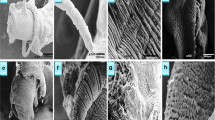Abstract
Schistosoma mansoni is a parasitic flatworm transmitted by snails which infects millions of people in tropical countries with poor sanitation, where new irrigation schemes, population growth and continued poverty have increased the prevalence of infection. Larval worms, emerging from freshwater snails, penetrate human skin and mature in intestinal veins where they lay eggs. Many eggs remain in and damage tissues while others pass out in excreta and hatch in water, releasing embryos called miracidia. These short lived, multicellular, ciliated, free-swimming miracidia must find, penetrate and reproduce within certain snails whence emerge the larvae infective for man. Snails emit substances (“miraxones”) which alter the swimming behaviour of miracidia and may help them to locate and attack the snails1–3. Miracidial behaviour is reportedly affected by snail-elaborated amino acids4,5 and by various other agents, including fatty acids6,7. We now report that magnesium appears in water in which uninfected Biomphalaria glabrata (a snail host of Schistosoma mansoni) is confined, and that magnesium ions alter miracidial swimming patterns.
Similar content being viewed by others
References
Chernin, E., J. Parasit., 56, 287–296 (1970); ibid., 58, 209–212 (1972); Am. J. trop. Med. Hyg., 23, 320–327 (1974).
Ulmer, M. J., in Ecology and Physiology of Parasites (edit. by Fallis, A. M.), 123–160 (University of Toronto Press, Toronto, 1971).
Cable, R. M., in Behavioural Aspects of Parasite Transmission (edit. by Canning, E. U., and Wright, C. A.), Zool. J. Linnean Soc., 56, Suppl. No. 1, 1–18 (Academic, London, New York, 1972).
Wright, D. G. S., and Ronald, K., Can. J. Zool., 50, 855–860 (1972).
MacInnis, A. J., Bethel, W. M., and Cornford, E. M., Nature, 248, 361–363 (1974).
MacInnis, A. J., J. Parasit., 51, 731–746 (1965).
Wilson, R. A., and Denison, J., Comp. Biochem. Physiol., 32, 511–517 (1970).
Folch, J., Lees, M., and Sloane-Stanley, G. H., J. biol. Chem., 226, 497–509 (1957).
Weigele, M., DeBernardo, S., Tengi, J., and Leimgruber, W., J. Am. chem. Soc., 94, 5927–5928 (1972).
Author information
Authors and Affiliations
Rights and permissions
About this article
Cite this article
STIBBS, H., CHERNIN, E., WARD, S. et al. Magnesium emitted by snails alters swimming behaviour of Schistosoma mansoni miracidia. Nature 260, 702–703 (1976). https://doi.org/10.1038/260702a0
Received:
Accepted:
Issue Date:
DOI: https://doi.org/10.1038/260702a0
- Springer Nature Limited
This article is cited by
-
Schistosome behavior in vitro
Journal of Chemical Ecology (1986)
-
Behavioral parasitology and perspectives on miracidial host-finding
Zeitschrift f�r Parasitenkunde Parasitology Research (1979)
-
Chemical stimulation of Schistosoma mansoni miracidial activity
Zeitschrift für Parasitenkunde (1977)





